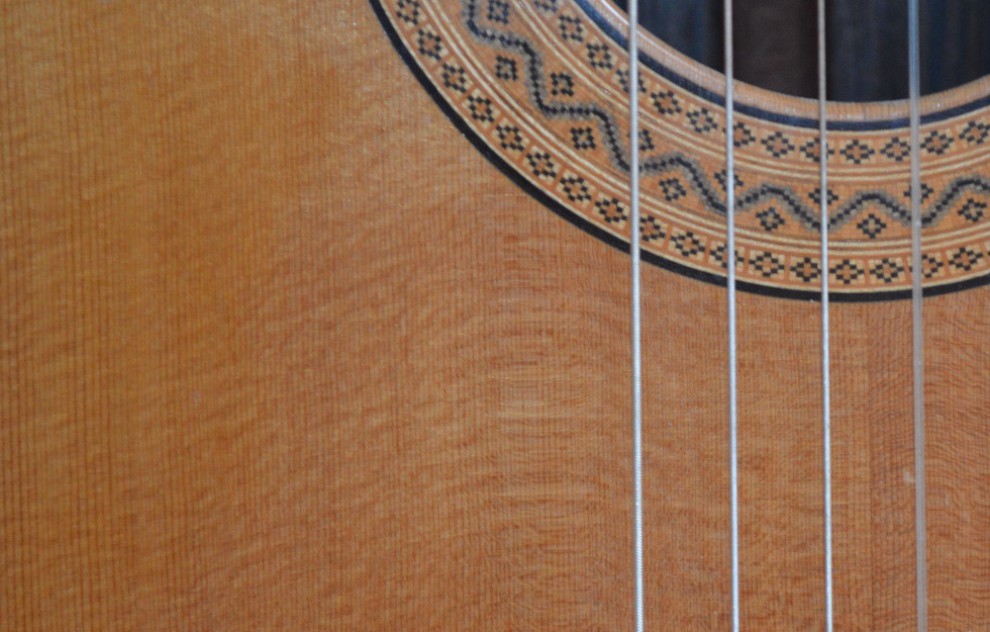
There are many variables to consider when a hand built guitar is on the drawing board; Sound Picture and playability, the various wood options and the design – just to name some of the most important.
For my guitars I use only the best materials, making my instruments a pleasure for the ear, hands and eye … for many years.
The front
The guitar front and the bracing on the back of it, matters the most for the classic guitar sound, timbre, balance and volume.
Therefore, I choose pine or cedar with the best grain, texture and storage, and put a lot of work in the design and crafting of the bracing. Typically, spruce gives a very clear sound where cedar has a more rounded soft sound
Back and sides
To the back and sides, I use rosewood. There are other possibilities, but I prefer rosewood, which is both a beautiful and acoustically excellent wood.
Neck and fingerboard
The neck I make of mahogany, often loaded with ebony or rosewood lines to provide strength and stiffness.
Fretboard is made by ebony; sometimes however, I use alternative dark hardwood, which is almost as hard and durable as ebony, and with a beautiful flame.
Enamelling
The most lengthy and laborious lacquering is unfortunately also the best, namely French polishing. The shellac is mixed with alcohol, which is applied numerous times in very thin layers.
The result is a thin uniform hard surface that provides the least possible effect on the wood’s acoustic properties, protects from humidity and strengthens the sound due to its hardness. Additionally, it has a very beautiful glow.
Furthermore, I apply one thin coat of shellac inside too. It slows the absorption and discharge of moisture, so the negative effects of rapid moisture fluctuations are minimized.

